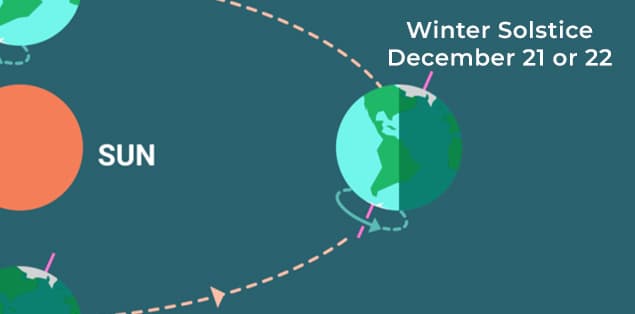So, what’s the longest day of the year? The June Solstice, also known as the Summer Solstice, takes place in the Northern Hemisphere when the Sun crosses the meridian and reaches its most northernmost position in the sky. It’s the longest day of the year. The season transition from spring to summer has begun in the northern hemisphere. (On the other hand, the winter season officially begins in the Southern Hemisphere on the winter solstice, which occurs in June and coincides with the Sun reaching its nadir in the sky.)
Numerous civilizations all around the globe have celebrations in honor of the Winter Solstice. This article, we’ll learn about various information related to the Summer Solstice.
So, without any further ado, let’s dive into the article!
What Is the Longest Day of the Year?

The Summer Solstice 2022 took place at 5:14 AM Eastern Daylight Time on Tuesday, June 21, 2022.
June Solstice marks the beginning of summer in the Northern Hemisphere. It occurs when the Earth arrives at the point in its orbit when the North Pole is tilted the most (approximately 23.5 degrees) toward the Sun. This causes the day to be the longest and the shortest night of the whole year. (When we talk about the “longest day,” we’re referring to the day with the most daylight hours.)
The winter season officially starts in the Southern Hemisphere on the Summer Solstice, which occurs in June; the Northern Hemisphere receives sunlight at the most perpendicular angle possible.
What Is the Longest Day of the Year Called?
This day, which occurs on June 20 or 21, is the Summer Solstice and is the longest day of the year. It also marks the beginning of summer. The autumnal equinox occurs around September 23, and we characterize it by days and nights of equal length.
This event marks the beginning of the fall season. The Winter Solstice occurs on December 21 or 22, which is the day that is the shortest of the year and marks the beginning of winter.
How Long Is the Longest Day of the Year?
As the north pole is tilted straight toward the Sun at the Summer Solstice in June, the length of the day in the Southern Hemisphere reduces during this time. The Tropic of Cancer is the latitude at which the Sun appears at its northernmost point; after crossing this line, it begins to move back towards the south.
The Sun’s journey toward the south celestial pole continues and will arrive at its most southern point in late December. As a result, the day of the Summer Solstice in June is longer than 12 hours over the whole of the Northern Hemisphere, but it is shorter than 12 hours throughout the entirety of the Southern Hemisphere.
When Do the Days Start Getting Longer?
After December 21, each day has an additional 2 minutes and 7 seconds of daylight than the previous day. It won’t be until about January 18 that we’ll get an additional hour of daylight, and after that, every 28 days (four weeks), there should be an additional hour or two of sunlight to brighten the days.
Until the Summer Solstice, which will occur on June 21, 2021, the days will continue to increase. On March 20, the vernal equinox, often known as the first day of summer, will take place.
What Season Has the Longest Days?

The days are often short in winter. Summer officially starts when the Sun reaches the Summer Solstice in the Taurus sign. Summer officially ends when the Sun reaches the autumnal equinox in the sign of Virgo. The season has the longest period, a total of 94 days.
What Is the Shortest Day of the Year?

The Winter Solstice is the day with the least amount of daylight on Earth. It is celebrated annually on December 21 or 22, the shortest day of the year, primarily in countries like the United Kingdom, the United States of America, India, Russia, China, and Canada, where the winter season is readily apparent with heavy snowfall.
How Many Minutes of Daylight Do We Gain or Lose Each Day?
After January 11, the increment will quicken to two minutes per day, and then it will quicken to three minutes per day by the middle of February. The rising rate slackens to two minutes per day in May, then drops to one minute per day as the Summer Solstice draws closer in June, and ultimately reaches its maximum of 15 hours and 13 minutes over June 16-26.
Final Words – What’s the Longest Day of the Year?
June 21 is the official date of the year’s longest day, often known as the “Summer Solstice.” The word Solstice originates from the Latin solstitium—from sol (Sun) and stitium (still or halted) (still or stopped).
The Summer Solstice is the day that has the greatest hours of sunshine compared to any other day of the year, making it the longest day of the year. We see over 15 hours of daylight on Staten Island on June 21.
The Summer Ssolstice brings about the longest day of the year and ushers in the longest time of twilight in both the morning and the evening because the Sun rises and sets at such a low angle, the sky lights for a longer period before and after dawn and sunset.
